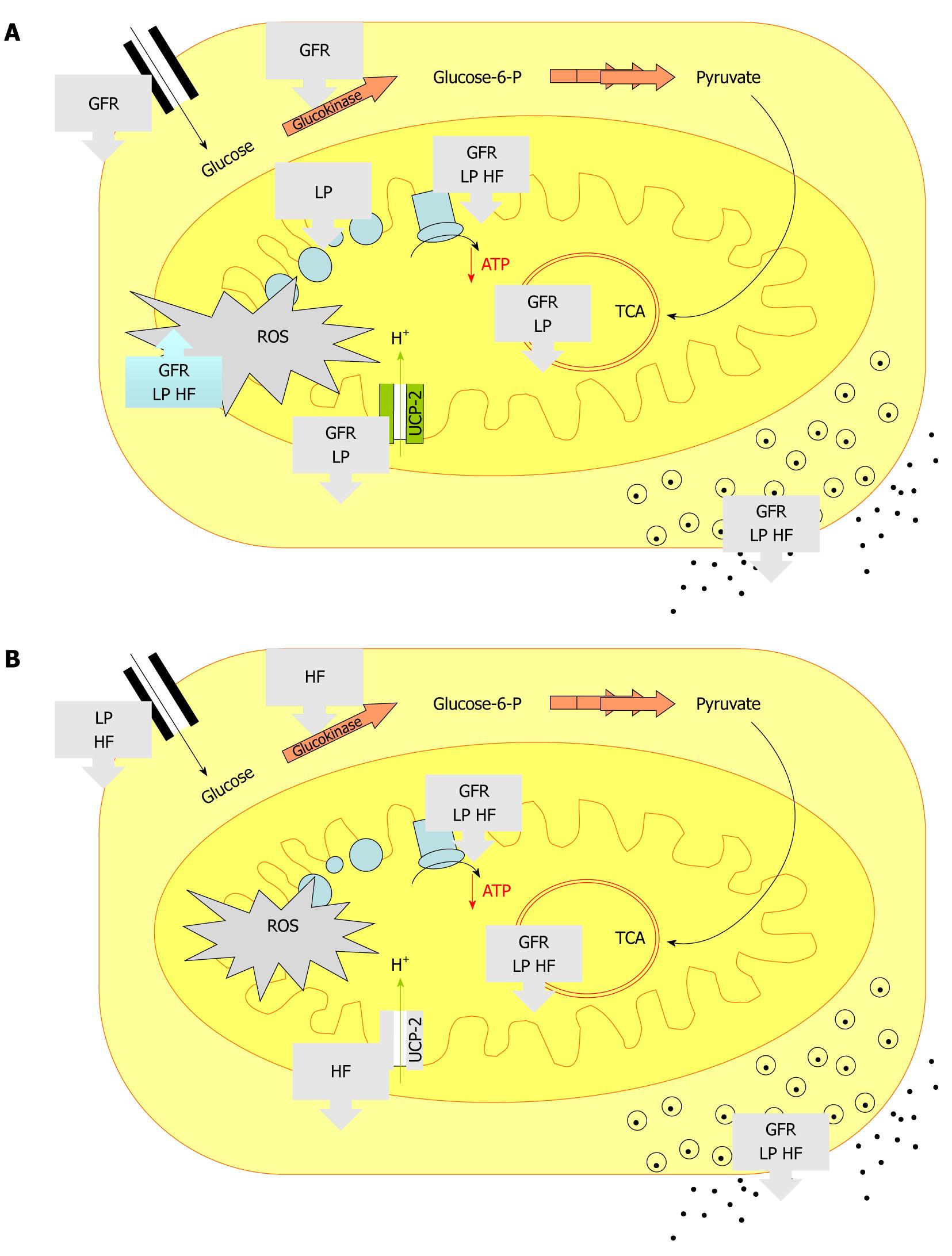Copyright
©2011 Baishideng Publishing Group Co.
World J Diabetes. Sep 15, 2011; 2(9): 149-157
Published online Sep 15, 2011. doi: 10.4239/wjd.v2.i9.149
Published online Sep 15, 2011. doi: 10.4239/wjd.v2.i9.149
Figure 1 Mitochondrial gene expression and biogenesis.
Environmental factors induce PKA and p38 MAPK pathways. PKA phosphorylates CREB transcription factor, which is involved in the induction of peroxisome proliferator-activated receptor γ coactivator (PGC)-1α gene expression. Activation of p38 MAPK phosphorylates PGC-1α protein, resulting in its stabilization and activation. PGC-1α activates the expression of the subunits of mitochondrial electron transport chain and Tfam, one of the major regulatory factors for mitochondrial transcription and replication, through the co-activation of nuclear respiratory factor 1-mediated transcription. Tfam subsequently translocates in the mitochondrion and directly increases the transcription and replication of mitochondrial DNA (Adapted from Remacle et al[45], 2007).
Figure 2 Summary of the main consequences of prenatal malnutrition on metabolic pathways in islets from low protein diet, global food restriction and high fat diet.
As shown in the text and extensively described in the related publications[53,63], the entrance of glucose was analyzed through GLUT-2 expression, the glycolysis through glucokinase expression, the TCA through citrate synthase and malate dehydrogenase expression. Reactive oxygen species production, ATP content and insulin secretion in response to glucose were also determined. The arrows indicated an increased or decreased level compared to control offspring. A: Males; B: Females; GLUT: Glucose transporter; TCA: Tricarboxylic acid cycle; GFR: Global food restriction; LP: Low protein diet; HF: High fat diet; ROS: Reactive oxygen; UCP: Uncoupling proteins species.
- Citation: Reusens B, Theys N, Remacle C. Alteration of mitochondrial function in adult rat offspring of malnourished dams. World J Diabetes 2011; 2(9): 149-157
- URL: https://www.wjgnet.com/1948-9358/full/v2/i9/149.htm
- DOI: https://dx.doi.org/10.4239/wjd.v2.i9.149










